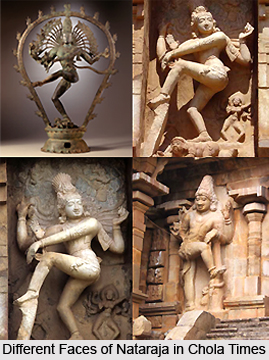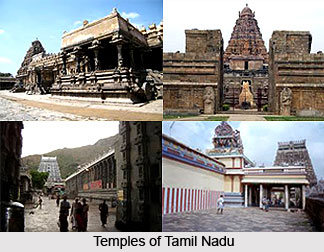 Tamil Nadu is amongst the 28 sates in India. Tamil Nadu covers an area of 50,216 sq mi and its capital is Chennai. It is the eleventh largest state in the country in terms of area. Tamil Nadu ranks seventh among the most populated states in India. In 2010, Tamil Nadu had the third largest GDP in India. Tamil Nadu was earlier known as Tamilham. There are also many ancient ports like Arikamedu, Karipattinam, and Korkai that exist in Tamil Nadu. Even popular as the madras presidency during the medieval period, Tamil Nadu holds a very illustrious history. Tamil is the official language spoken by the locals. Tamil Nadu is rich with natural resources and hosts ancient Hindu temple of the Dravidian era and many tourist locations.
Tamil Nadu is amongst the 28 sates in India. Tamil Nadu covers an area of 50,216 sq mi and its capital is Chennai. It is the eleventh largest state in the country in terms of area. Tamil Nadu ranks seventh among the most populated states in India. In 2010, Tamil Nadu had the third largest GDP in India. Tamil Nadu was earlier known as Tamilham. There are also many ancient ports like Arikamedu, Karipattinam, and Korkai that exist in Tamil Nadu. Even popular as the madras presidency during the medieval period, Tamil Nadu holds a very illustrious history. Tamil is the official language spoken by the locals. Tamil Nadu is rich with natural resources and hosts ancient Hindu temple of the Dravidian era and many tourist locations.
History of Tamil Nadu
The locals of Tamil Nadu were originally of Dravidian origin and they resided in the northwest. With the advancement of the Indo-Aryans, the Dravidians were pushed to the south. The Sangam literature is the basis of Tamil History, culture and organisations from the 3rd century AD. The Cholas, the Pallavas, the Pandyas and the Cheras had their influence on Tamil Nadu and established their kingdoms. The Pallavas established their reign at Kanchipuram in about the 4th century Ad. At the end of the 9th century the Cholas established themselves as they extended their empire.
 In the 13 the century the Pandya Dynasty dominated. The establishment of the Vijayanagar Empire brought the downfall of the Pandyas. The Muslim powers also influenced this region politically. The British managed to control this region in the 19th century. This region was under the domain of the East India Company and continued till independence after which the three states of Tamil Nadu, Andhra Pradesh and Orissa were formed. The region under the jurisdiction of the Madras Presidency formed into a single unit and named Tamil Nadu in 1969.
In the 13 the century the Pandya Dynasty dominated. The establishment of the Vijayanagar Empire brought the downfall of the Pandyas. The Muslim powers also influenced this region politically. The British managed to control this region in the 19th century. This region was under the domain of the East India Company and continued till independence after which the three states of Tamil Nadu, Andhra Pradesh and Orissa were formed. The region under the jurisdiction of the Madras Presidency formed into a single unit and named Tamil Nadu in 1969.
Geography of Tamil Nadu
Tamil Nadu covers an area of 130,058 sq km, and is the eleventh largest state in India. West and North of the state have lofty hills while the East and South are coastal plains. The bordering states are Kerala to the west, Karnataka to the northwest and Andhra Pradesh to the north. To the east is the Bay of Bengal. The southernmost tip of the Indian Peninsula is located in Tamil Nadu. At this point is the town of Kanyakumari, which is the meeting point of the Arabian Sea, the Bay of Bengal, and the Indian Ocean.
Tamil Nadu has a wide variety of minerals with the most reserves in India. Almost 90% of India`s Lignite reserves, 45% of Magnesite and over 40% Garnet is found here, among others. Forests cover over 17% of the state`s geographical area with several protected areas of Tamil Nadu including wild life and bird sanctuaries.
Demography in Tamil Nadu
Tamil Nadu`s population stood at 62,110,839 as of 2001 census. It is the sixth most populous State of the Indian Union behind Uttar Pradesh, Maharashtra, Bihar, West Bengal and Andhra Pradesh. The State accounts for 6.05% of the country`s population. Its population density at 478 persons per square kilometre, up from 429 in 1991, and much higher than the all India density of 324, makes it the eleventh most densely populated State. Approximately 47% of Tamil Nadu`s population live in urban areas, one of the highest percentages in India. During the decade 1991-2001, Tamil Nadu reported the second lowest decadal growth in population after Kerala, among the group of States with population exceeding 20 million in 2001. While Kerala`s population grew by 9.42% between 1991 and 2001, Tamil Nadu`s grew by 11.19%. In fact, Tamil Nadu, Kerala and Orissa are the only three States in this group to have shown a decline in decadal percentage change in population in every decade since 1971.
 Culture of Tamil Nadu
Culture of Tamil Nadu
Tamil Nadu has a long tradition of venerable culture. Unique cultural features like Bharatnatyam, Tanjore painting, and Tamil architecture were developed and practised in Tamil Nadu. Chola Dynasty conquered lands as far north as the Ganges, and as far east as Thailand, Cambodia, Malaysia and Indonesia resulting in dissemination of Tamil culture.
Tamil is the official language of Tamil Nadu and is one of the two classical languages of India, the other being Sanskrit. Tamil Nadu is known for its rich tradition of Literature, Music and Dance, which continue to flourish today.
Education in Tamil Nadu
Tamil Nadu has 350 engineering colleges and 1150 Arts College, 2550 schools and 5000 hospitals. Tamil Nadu has performed reasonably well in terms of Literacy in India during the decade 1991-2001. The state`s literacy rate increased from 62.66% in 1991 to 73.47% in 2001 which is well above the nation average. IIT Madras, Anna University, NIT Tiruchi, Christian Medical College, Presidency College Tamil Nadu Agricultural University are the premier institutes in the state.
The Dravidian movement, which began in Tamil Nadu, championed the cause to uplift the socially repressed people, but it also drew considerable support from the middle classes. Educating the people and eradicating superstitions were some of their objectives.
Administration in Tamil Nadu
Lok Sabha constituencies, 234 Assembly constituencies, 30 districts, 7 municipal corporations, 152 municipalities, 561 town panchayats and 12,618 village panchayats. Tamil Nadu has been a pioneering state in E-Governance initiatives in India. A large part of the government records like land ownership records are already digitised and all major offices of the state government like Urban Local Bodies All the Corporations and Municipal Office activities revenue collection etc, land registration offices, and transport offices have been computerised, thereby improving the quality of service and transparency in operations.
Economy of Tamil Nadu
Agriculture is the dominant source of economy in Tamil Nadu. Major food crops are rice, Jowar, ragi, bajra, maize, and pulses. Cotton, sugarcane, coconut, tea and coffee as well as a number of horticultural products like bananas and mangoes are cash crops while groundnuts, sesame, and sunflower are important oil seeds crop. Rice is the main crop.
Industrially, the state has made rapid strides and there has been a great deal of diversification, although the traditional industries like hides and skins which have a major export angle, continue to occupy their important place, besides the exports of tanned hides and skins and of leather products, form the traditional shoes to fancy products, the state also export tea, coffee, spices, textiles and yarn engineering goods. Black granites and other products including handicraft articles are also worthy mentioning.
Tourism in Tamil Nadu
The tourism industry in Tamil Nadu is well developed and holds the second position in the country. Tamil Nadu consists of some of the most ancient temples of the Dravidian era and also has diverse natural beauty. Amongst the popular temples that are most visited by the tourists, Airavateswara Shiva Temple, Gangaikondacholapuram, Brihadeshvara Temple, Swamithoppe, Shore Temple, Thiruvannaamalai, Tiruvallur, Chidambaram Nataraja Temple, Tiruttani and Tiruchendur are worth mentioning. Madurai is also popular for various Hindu temples like Meenakshi Amman Temple, Srirangam, Sri Ranganathaswamy Temple.
There are also stunning hill stations that are popular among the tourists. Coonoor, Kodaikanal, Udhagamandalam or Ooty, Nilgiri hills, Yercaud, Yelagiri and Cardamom hills are the most visited along with other such locations. There are also National parks that support the cause of tiger conservation, such as Kalakkad Mundanthurai Tiger Reserve and Mukurthi National Park. The Vivekananda Rock Memorial in the southern tip of peninsular India, Kanyakumari also draws a huge number of visitors. Tamil Nadu is also the most visited region in terms of medical care. Madurai, Vellore, Chennai and Coimbatore are the most popular.






